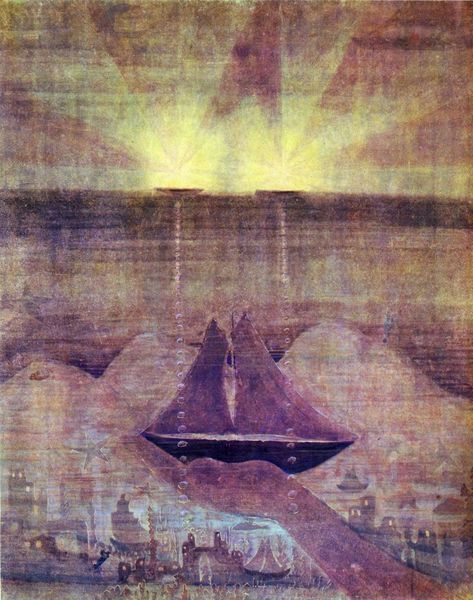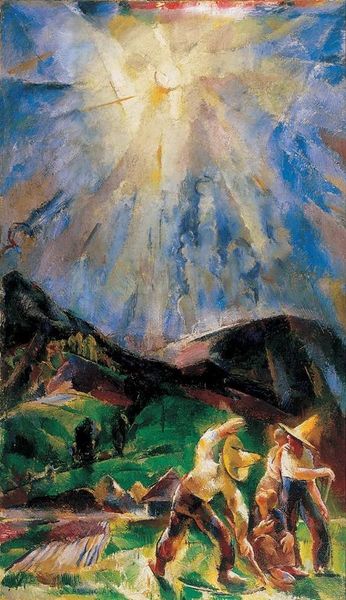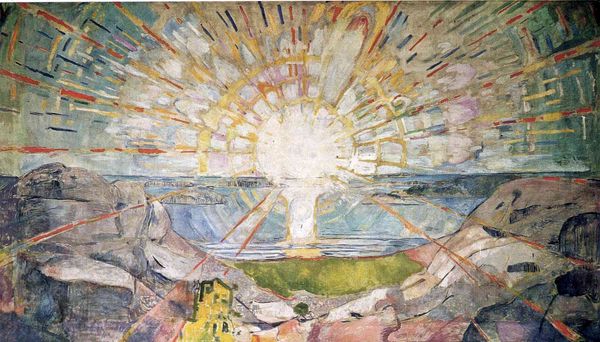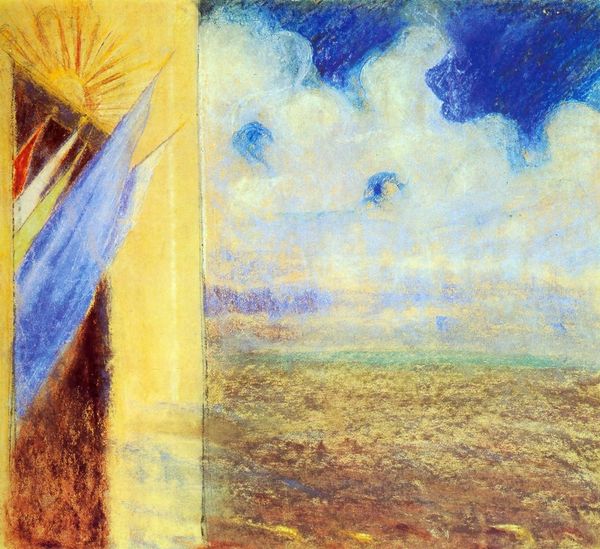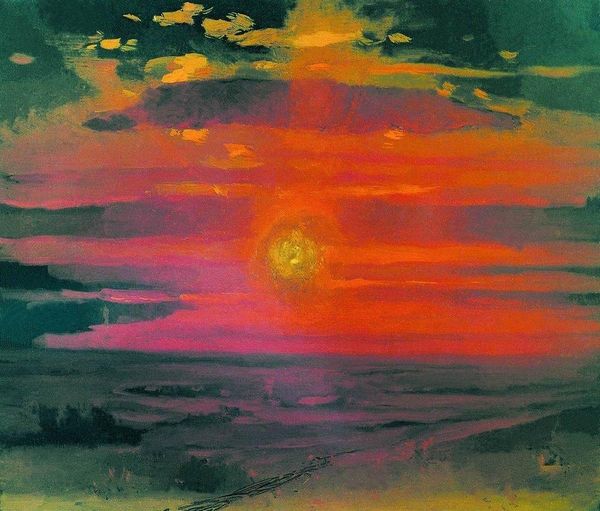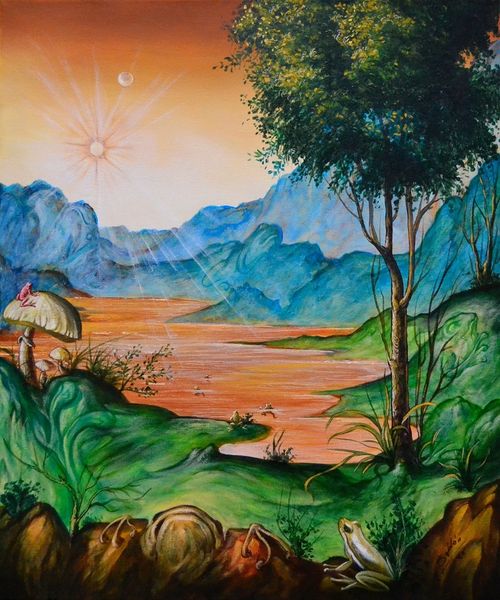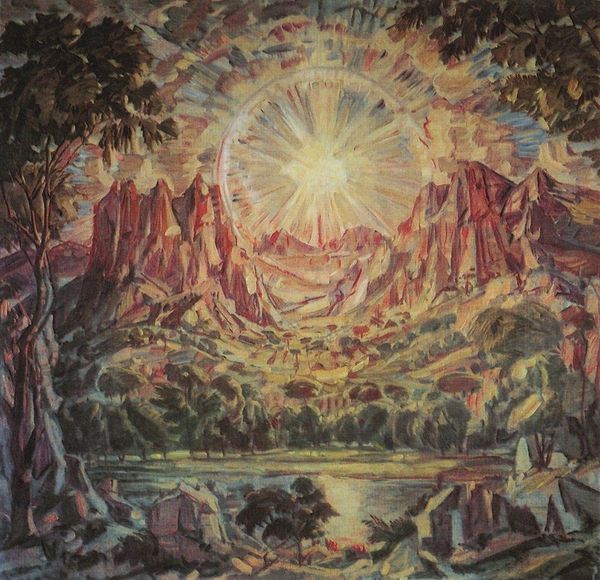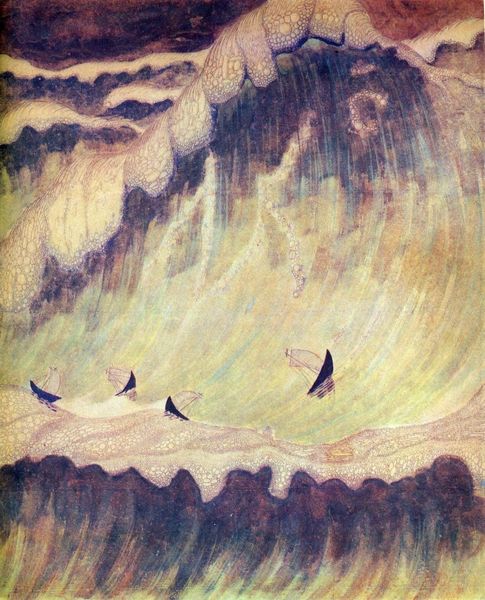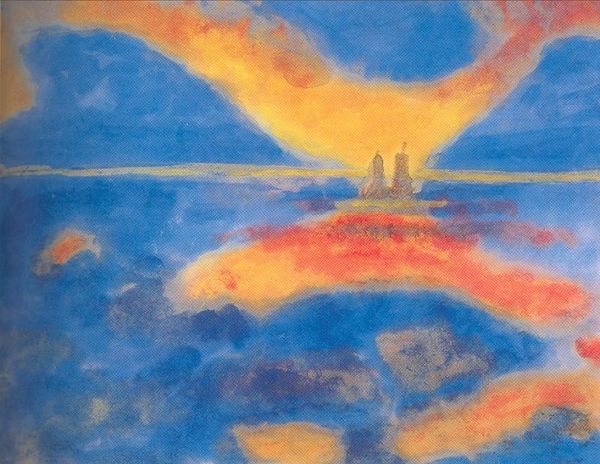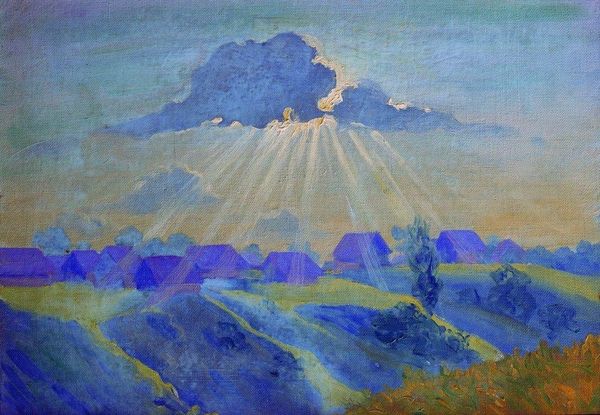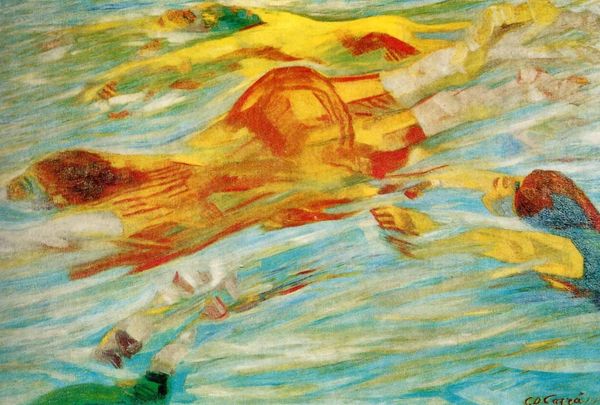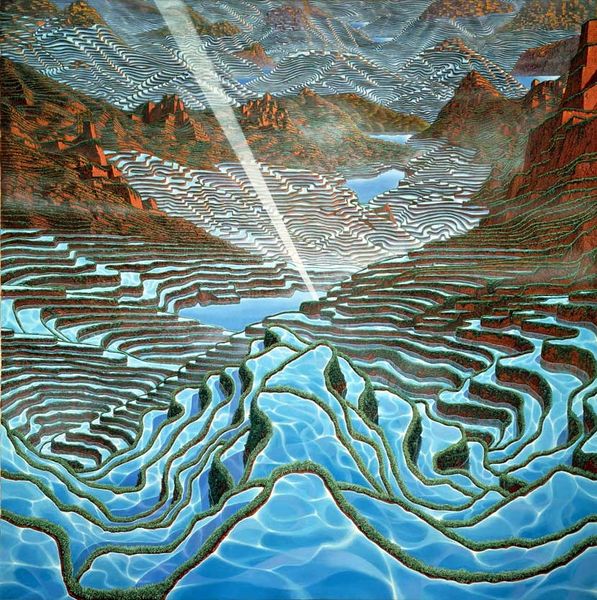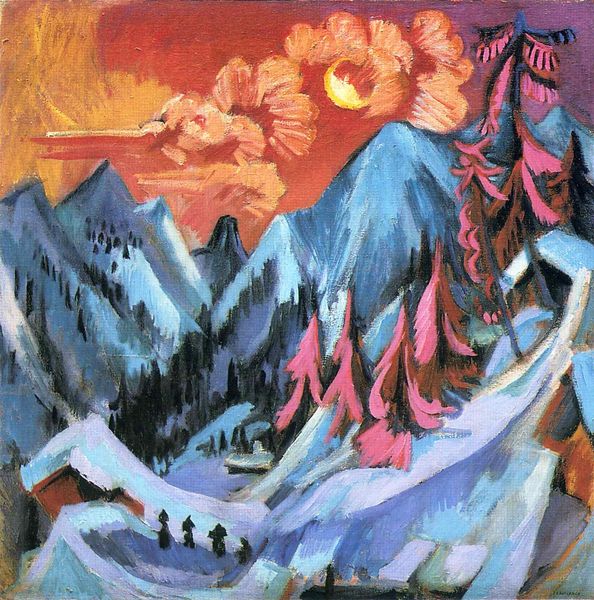
Copyright: Public domain US
Editor: Here we have Erich Heckel's "Frühlingslandschaft," or "Spring Landscape," painted in 1917 using oil on canvas. I'm immediately struck by the almost violent contrast between the vivid sunlight and the muted earth tones, yet the landscape is soothing overall. What elements jump out at you, looking at it formally? Curator: Formally, the composition operates through a dynamic interplay of line and color. The radiating lines of the sun create a powerful focal point, directing the eye. Consider the way the artist uses color, juxtaposing complementary hues like blues and oranges. Does this chromatic tension create a sense of unease despite the seemingly pastoral subject matter? Editor: It does! I see that now, but it's also the layering of color. It's almost like he's built the image in textures that compete and contrast, rather than harmonise? Curator: Precisely. It’s not merely the selection of colours, but the application – thick, expressive brushstrokes – that constructs the painting's unique formal language. The materiality of the paint itself contributes to the overall effect. Notice the rendering of the road leading into the background. What is the relationship between that pathway and the fields? Editor: It leads me to contemplate the painting's movement and stasis. I like how Heckel juxtaposes stillness with such a strong implied perspective, and the eye jumps from point to point. So, even the landscape pulses, a bit! Curator: I agree entirely! So the tension between movement and stasis contributes significantly to its aesthetic power. By examining its intrinsic elements we gain a more intimate connection with what makes this landscape by Heckel such a visceral experience. Editor: Yes, by analyzing the texture and colors in concert, it helped me move past just describing my initial impressions of light to thinking about what Heckel might have intended, by literally layering meaning!
Comments
No comments
Be the first to comment and join the conversation on the ultimate creative platform.
